The site is considered one of the most important Italian deposits, in fact it contains one of the oldest testimonies of prehistoric art in Italy and one of the most important at a European level. The importance is linked not only to the presence of rock art but also to the burials (9 individuals in total) and to the numerous lithic and faunal finds; the latter cover a time span between 23.000 and 10.000 years ago and have allowed the reconstruction of the eating habits, social life and environment of both the so-called "Hermit man" - probably of the Cro-Magnon type, who did not yet breed animals nor practiced agriculture and ceramic manufacturing, but was dedicated exclusively to the hunting of wild animals and the collection of spontaneous plants, using flint above all to make tools - both of Homo Sapiens, of which evidence remains in the tools lithic and bony, in the graffito of Bos primigenius and in the remains of burials.
The cave is made up of two very distinct parts: the actual cave of about twenty meters and the shelter which extends for another thirty-four metres.
In a large part of the area, no materials or traces of activity were detected as are commonly found in areas of use dedicated to functional activities, there is a lack of chipping products as well as bone remains that could indicate food activities; Furthermore, traces of carbon usually present in thick layers are missing. This makes the interpretation of this structure probable according to a non-functional but ceremonial use, also considering its attendance over a very long period of time.
In fact, during the excavations between 1961-1968 Paolo Graziosi had already brought to light six burials (Fig.1): a burial with two deceased (Romito 1-2) in the shelter deposit, two single burials (Romito 3-4) inside the cave, another double burial (Romito 5-6) also in the shelter. In more recent times, thanks to new excavations starting in the 2000s, three other single inhumations were discovered (Romito 7-8-9).
The skeletons of individuals from Romito 1 to 8 are all in a good state of preservation, they are adult or subadult individuals, both females (Romito 1, 4 and 5) and males (Romito 3, 6, 7, 8). Romito 2 is probably a male. Considering the locations of the buried, their methods of deposition and anatomical characteristics, two groups can be identified: the first, the oldest, includes the single burials, positioned inside the cave, well aligned next to each other and concern robustly built individuals placed in the pits with their heads oriented to the south; the second group, that of the bisome burials positioned in the shelter, includes individuals with a more fragile constitution (congenital malformation or survivors of heavy physical trauma), which demonstrates the care given by the human group also to people with physical problems.
Furthermore, analyzes relating to biomolecular archaeology, in particular on ancient DNA, were conducted to reconstruct the genetic identity, geographical origin, sex, kinship relationships and habits of the populations; in particular, the molecular analyzes have indicated, for example, that the humans of Romito 5 and 6, buried together in the same grave, were related through the mother, that is, with their mother or grandmother in common, collapsing the hypothesis of "marital" burial, unless a marriage between blood relatives is admitted and instead making the valorization of the matrilineal clan more probable and logical.
Romito 1-2 (Fig. 2 and 3): This burial was located at a distance of about two meters from the boulder with the incision of the Bos primigenius. Graziosi's excavation notes describe an oval pit (depth 30 cm, length 140 cm, width 50 cm) inside which an adult woman and a probable 15-20 year old male were placed, in a supine position, side by side; the woman partially covered the man's left shoulder and the back of her head rested on her partner's cheek, the man in turn covered her shoulders with his left arm, while her right arm was stretched along her body . The two individuals, aged 15-20 years, are both of very small stature and with malformations/pathologies: the male is 1,40 m, probably suffering from dwarfism, the female is 85 cm, who among other things has the femur and the humerus affected by strong dysmorphism and osteoporosis. A horn was placed between the legs of the buried Bos primigenius and another smaller fragment was on the woman's right shoulder, considered by Graziosi to be elements of the funerary objects.
Romito 3-4 (Fig.4): These are two single burials, close together, located inside the cave, each positioned in a pit, of similar dimensions (approximately 145cmx50cm) and with the deceased – around 160-170cm in height – lying on their backs, with their arms at their sides and covered with large limestone blocks. In particular, the Romito 3 skeleton of an adult male was not complete - in fact, at the time of the excavation, the skull, part of the ribs and the arms were missing - probably due to an excavation by unknown persons which took place in the period preceding Graziosi's arrival in 1961. The skeleton Romito 4, a young woman aged 18-20 years, is almost complete.
Romito 5-6 (Fig.5): This is the second bisoma burial that emerged in the shelter. The two skeletons, about 155 cm tall and about 30 years old, were placed in a single grave, oriented North West-South East, in a supine position with their legs bent and, as Graziosi describes, the burial was surrounded by stones; other smaller stones were found on the chest and legs of the two individuals. It should be noted that a part of the Romito 6 skeleton was decomposed at the time of discovery, as the double burial took place in two different periods: first the burial of Romito 6 was documented, then, after the decomposition of its soft parts, Romito 5 was buried, thus causing the movement of part of the skeleton already present. In addition to being linked to the prolonged use of the cave as a burial/cult place, the results of the molecular analyzes have also, in this case too, demonstrated a maternal relationship between the two buried individuals.
Romito 7 (Fig.6): This burial was discovered in 2001 and is of a young male, who died at the age of approximately 18-20 years, placed in a narrow and deep grave and then covered by a well-structured construction of large stones, arranged neatly in three superimposed orders; in a slightly oblique position from the pelvis towards the head, two stones were found larger than the others and quite flat in shape, almost as if to create a sort of "protection chamber" for the pelvis itself and the thorax; his hands were crossed at the pubis. In this case, no elements of funerary objects were found, except for a flint tip placed along the right side; another stone object was found in contact with the hands, but its value as a ritual offering remains doubtful. A certain quantity of red ocher was highlighted on the pelvis, a pigment often used to cover, partially or totally, the bodies of the deceased (see Thea – San Teodoro Cave).
Romito 8 (Fig.7): This burial, discovered in 2002, also follows the same procedures mentioned for Romito 7; the body placed in a narrow and deep grave is covered by numerous stones, in the absence of funerary items. The analyzes on the remains highlighted a trauma suffered by this individual - of which evident traces remain on the humerus and skull - which had damaged the radial nervous plexus causing the consequent paralysis of the left arm. This physical impairment prevented the individual from carrying out many of the most intense physical activities of the Paleolithic era, but the exceptional wear of the occlusal surfaces of the teeth, probably used as "tools", therefore for non-food purposes (for example processing of soft wood or leather or other semi-hard material), indicates that, despite his physical disability, he participated in other activities, thus contributing in other ways to the life of the community.
Romito 9 (Fig.8): discovered at the end of 2011, it is the oldest burial found on the site and has been dated to around 14.000 years ago. It is a young male, 11-12 years of age, buried with rich funerary objects (Fig. 9); in fact, the corpse was placed in the grave lying on a bed of red ocher and covered by a kind of "shroud", adorned and decorated with more than a thousand pierced shells. Other red ocher also covered the body, around which, still inside the pit, about a hundred pierced atrophic deer canines were found, most of which formed two bracelets that adorned the left forearm and the right wrist of the young man. Despite the tampering with the burial, which also occurred in prehistoric times, a good part of the skeleton remained ,, allowing us to understand the methods of the funerary ritual.
The recent study by Martini-Lo Vetro, "Ritual acts and Paleolithic ceremonial spaces in the cave environment", by relating the different elements present in the site, attempts to reconstruct and give an account of the possible symbolic universe linked to the cave as a place of worship /ritual: in fact, a possible correlation between the boulder and the engraving of Bos primigenius, the structures (pit and dimples) and inhumations (the four single ones in the cave and the two bisomes in the shelter) and the physical delimitation of the shelter area itself. In fact, the authors use the so-called "repetition of the symbolic act" as a shared code within a cultural system as a primary interpretative parameter. In this sense, the Grotta del Romito provides numerous evidences which undoubtedly fall within the scope of the ritual: the large boulder of Bos primigenius, located almost in the center of the site, at the entrance of the cave, releases a "remarkable iconic force" almost as if to delimit the border between the external shelter and the dark internal space of the cave - also considering that in ancient times the two spaces were not separated as happened later and instead it was only a lower and rockier part of the ceiling that acted as a limit in terms of perception of space. Serving as the totemic protector of the clan, he represents “a sort of omphalos that captures the perception of those who move in that space, a spatial reference point that brings order and becomes a gravitational point”. The importance of the symbolic value of Bos is also confirmed by the fact that fragments of horn are present in some of the burials (Romito 1-2) and therefore, "where it symbolically marks the underground space of the pit intended to pass on the memory of the conservation and custody of the deceased, at the same time it also marks the outdoor space where daily life takes place and utilitarian and symbolic, functional and rituals. It follows that the numinous grandeur of the animal, directly illuminated by the light of the sun at certain hours of the day, and the repetitiveness of its metaphorical presence in relation to the burials seem to give it a totemic meaning” (Martini-Lo Vetro, 2012). Among other things, even the discovery of faunal remains without further traces that suggest their daily or food use, and indeed considered of a non-ordinary type, like the deer, suggest a strictly ritual use: the presence of the antler of deer (Fig. 9) proves to be consistent with the symbolic code in which the Bos primigenius, thus expanding the zoomorphic symbolic world of reference of the community. And then, the presence of small limestone blocks of similar proportions to each other, without traces of human intervention and bearing a natural crack that recalls the vulvar sign (Fig. 10), enters into a symbolic relationship with "the great theme of female fertility, primary like hunting and the animal world in the conceptual, symbolic and figurative repertoire”, precisely because, although the symbolic one may not be the only key to understanding the three dimples, their possible functional use has not been clarified.
Finally, the theme of memory should be highlighted: the fact that for many centuries this same space was used for the same symbolic-ritual purpose, maintaining the memory of the presence and exact location of the previous tombs, "underlines and amplifies the ceremonial value of this small space of memory used for the funerary rite for over a millennium”. The boulder, as the limit of the area, “attributes to the space itself the meaning of verticinos, of sacral 'centre' within which a relationship with the non-real is established through ceremonial and ritual practice”. And in a similar sense, inside the cave, the creation of the underground spaces of the pits or structures, such as the roadbed, is intended for symbolic behavior. That is, they are createdin the functional space of the site of metaphorical-cytotemic references? – figurative taken from the animal world […] All this gives symbolic practice a strong social and collective value in which the identity of the group can be built".
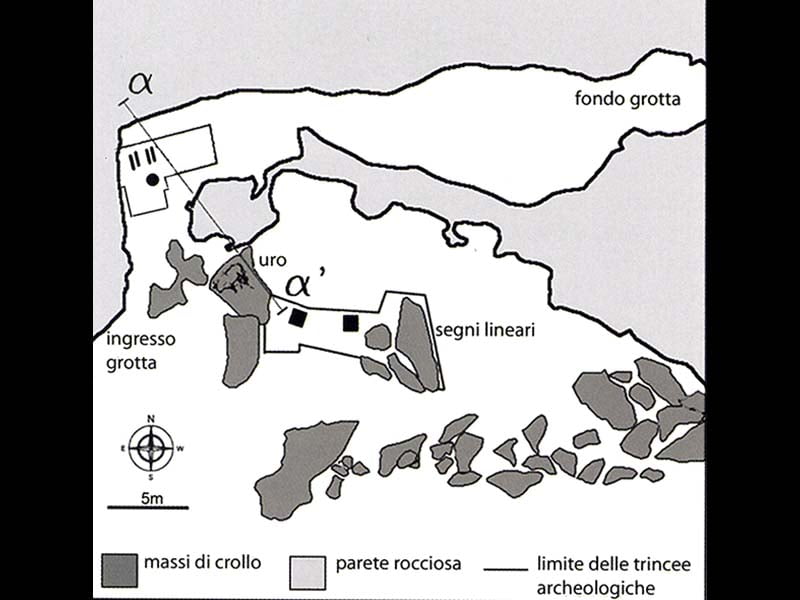
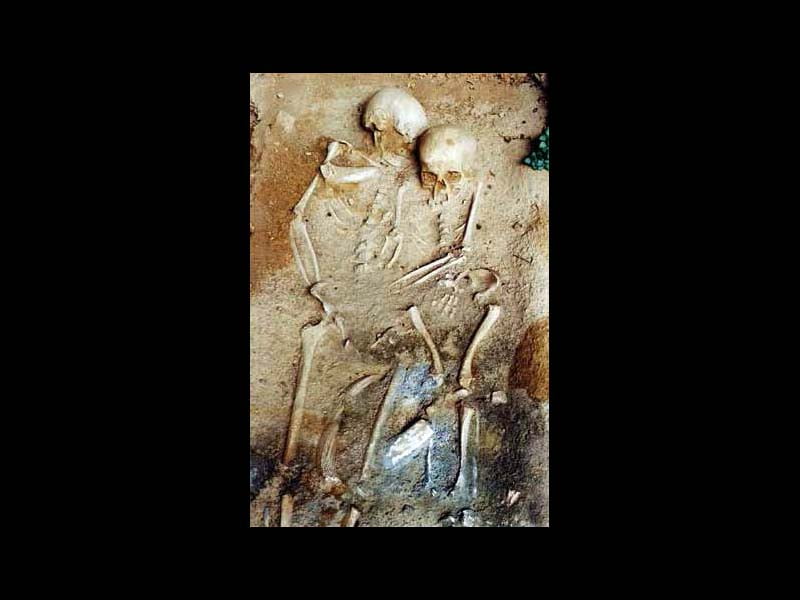
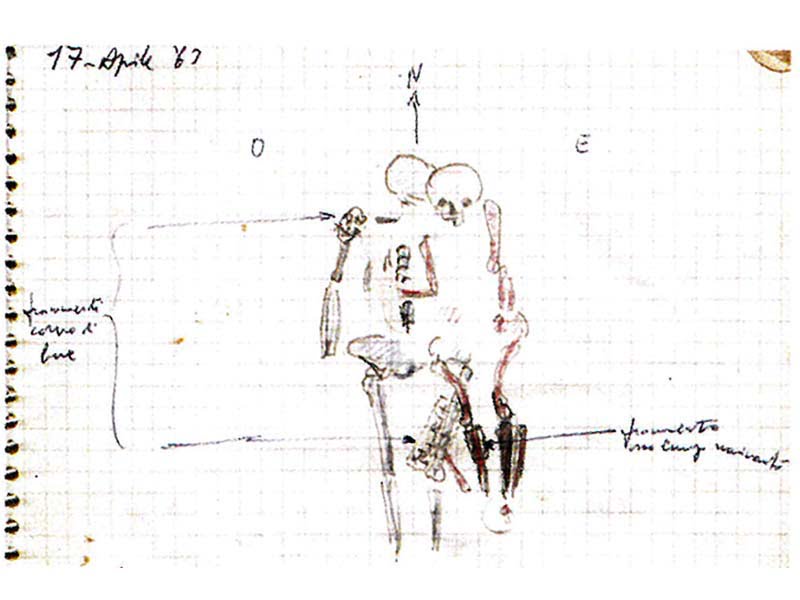
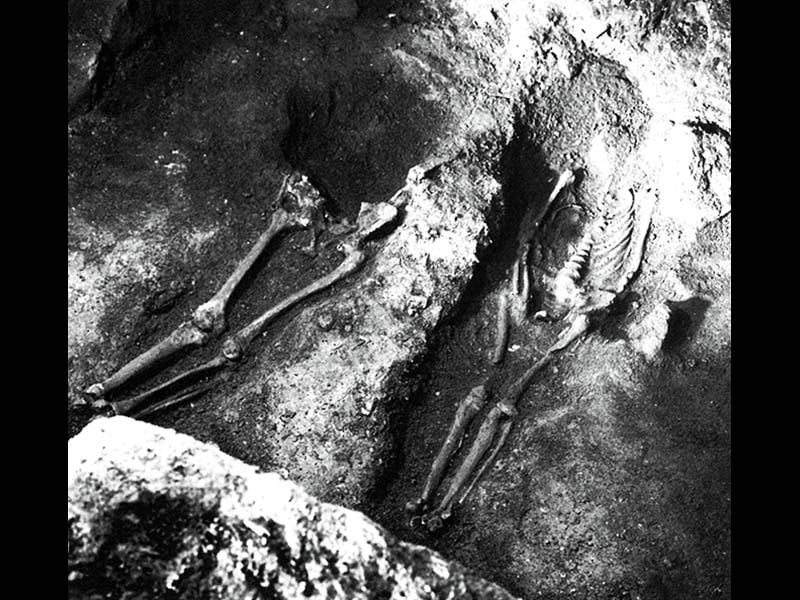
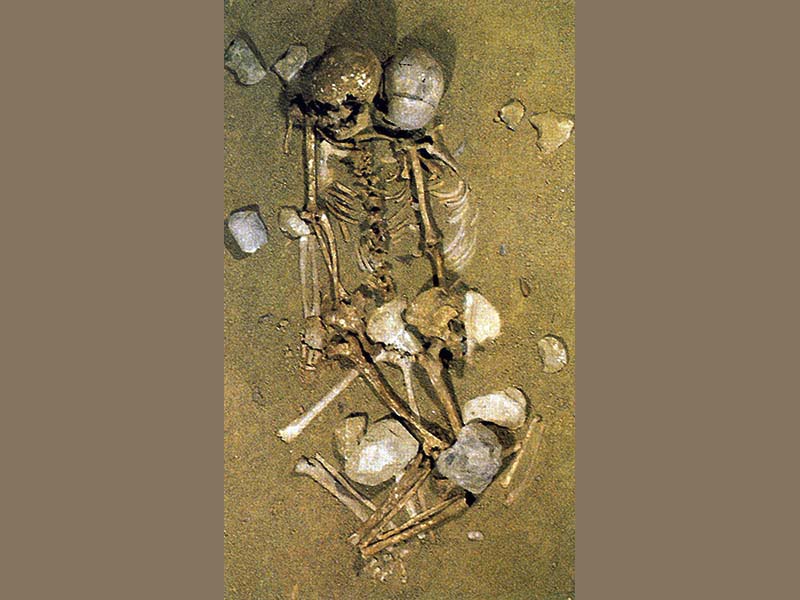
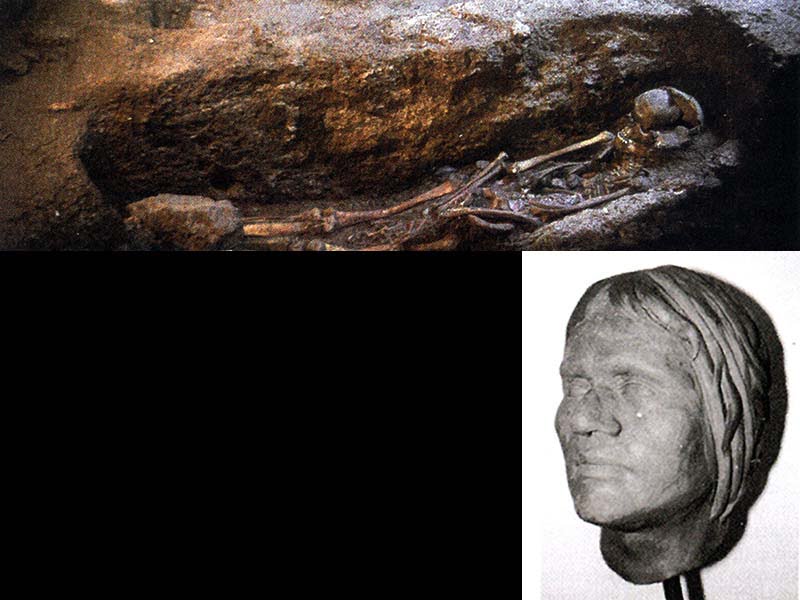
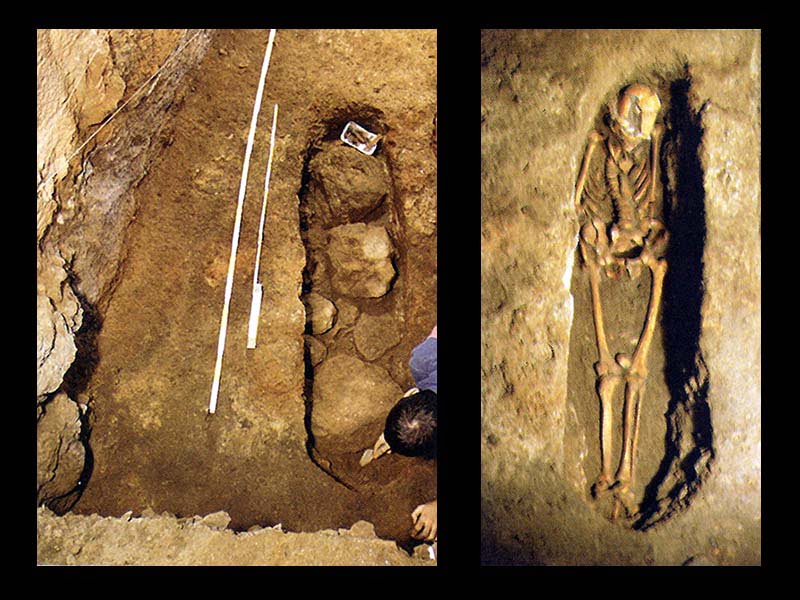
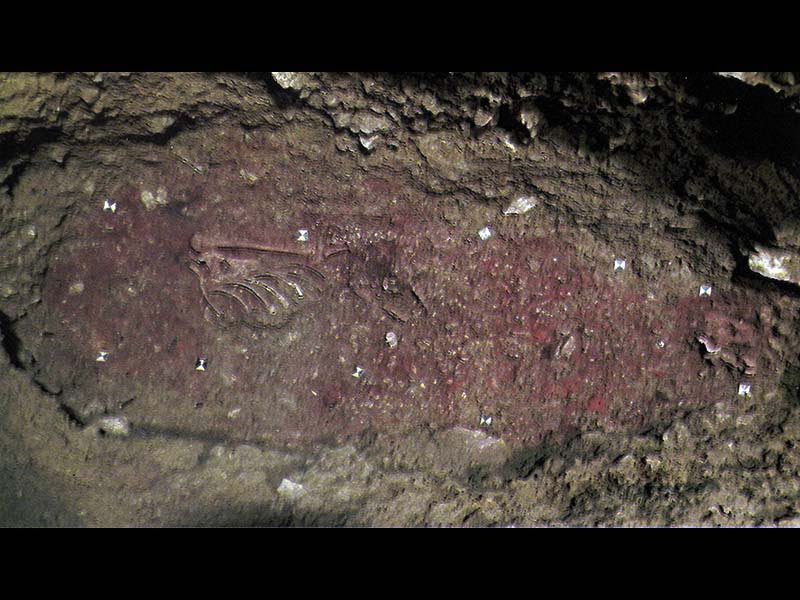
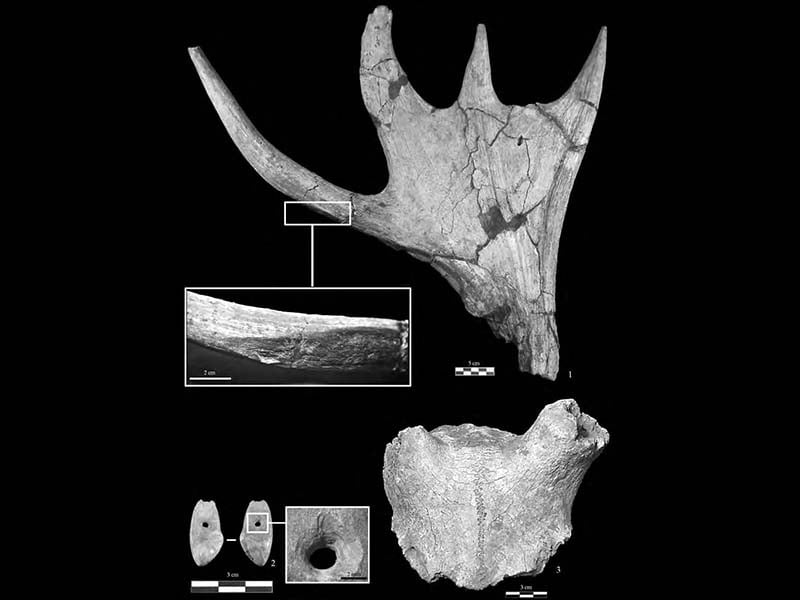
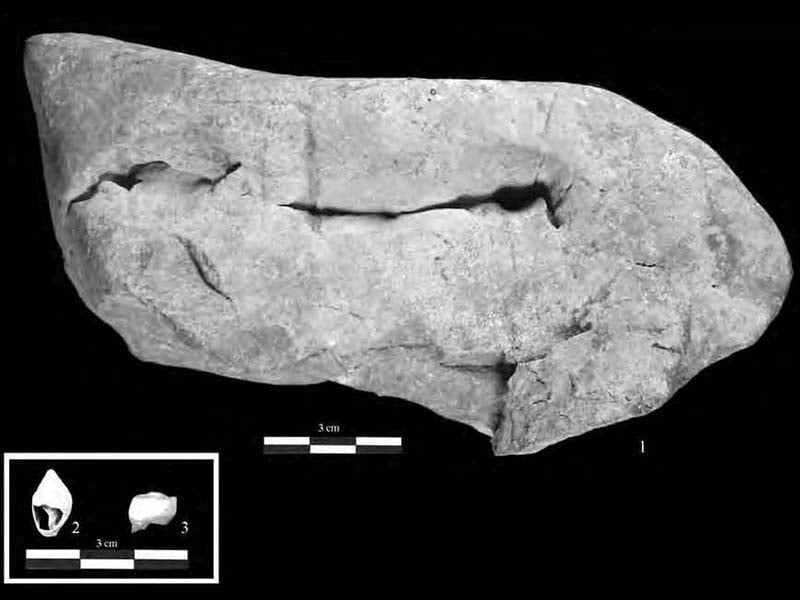
Historical notes
Calabria has been inhabited since the most ancient phases of Prehistory: the Neanderthals have already left various testimonies in some coastal caves but it is above all the Homo Sapiens species, which appeared in Europe around 40 thousand years ago, which provides the greatest amount of information . The Grotta del Romito was frequented during the most recent phase of reduction of the last glaciation, a period in which a climatic improvement therefore occurred, i.e. the one coinciding with the Upper Paleolithic (between 40.000 and 10.000 years BC); as far as the findings and human attendance are concerned, they date back to a period that goes from 18.000 BC. It is above all from around 11.000 years ago that the cave acquires a particular significance, given the high number of burials and this leads us to think of a sort of "sanctuary" of the funeral rite which concerns both the internal part and the external area, the so-called shelter. In fact, also thanks to its position, during the Neolithic - with the transition from a prevalent activity of hunting and gathering to that of production (cultivation, breeding, creation of ceramics and trade) - the Grotta del Romito became a transit point for the obsidian trade, and therefore a particularly important and frequented place.
In recent times, around the year 1000, the cave was frequented by monks from the nearby monastery of Sant'Elia who used it as a hermitage, hence the name Grotta del Romito. During the excavations, carried out from 1963 to 1967 and conducted by the Superintendence for Archaeological Heritage of Calabria and by the Italian Institute of Prehistory and Protohistory under the direction of Prof. Paolo Graziosi, the first burials and numerous lithic and bone finds came to light, a powerful archaeological deposit over 8 meters thick, which demonstrated a long phase of occupation of the cave. The second season of investigations, started in 2000 by the University of Florence and the Florentine Museum of Prehistory on behalf of the Archaeological Superintendency of Calabria, currently still in progress, has given a new impetus to research on this site, as with the death of Prof. Graziosi had not completed all the study projects he had started. Currently, thanks to the formation of an interdisciplinary team (which includes geologists, paleontologists, paleobotanists and paleethnologists from various Italian and foreign universities, and also young scholars) and the advancement of archaeological research methods, it is possible to integrate the knowledge already acquired with the others deriving from the discovery of new finds and the archaeological and environmental reconstruction of the site can continue and expand. In fact, it is precisely the latest burials found (Romito 7-8-9) that contribute to expanding knowledge on the funerary rite and hypotheses on the symbolic universe of those human communities.
CARD
LATEST PUBLISHED TEXTS
VISIT THE FACTSHEETS BY OBJECT

